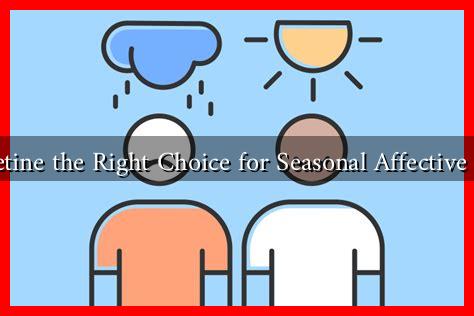-
Table of Contents
Is Fluoxetine the Right Choice for Seasonal Affective Disorder?
Seasonal Affective Disorder (SAD) is a type of depression that occurs at specific times of the year, most commonly during the fall and winter months when daylight hours are shorter. This condition can significantly impact an individual’s quality of life, leading to symptoms such as fatigue, irritability, and difficulty concentrating. One of the treatment options for SAD is Fluoxetine, a selective serotonin reuptake inhibitor (SSRI). This article explores whether Fluoxetine is the right choice for managing Seasonal Affective Disorder.
Understanding Seasonal Affective Disorder
SAD is believed to be linked to changes in light exposure, which can affect the body’s internal clock and serotonin levels. According to the National Institute of Mental Health, approximately 5% of adults in the U.S. experience SAD, with women being more likely to be affected than men. Symptoms can include:
- Low energy and fatigue
- Changes in sleep patterns
- Weight gain or loss
- Difficulty concentrating
- Feelings of hopelessness or worthlessness
Understanding the symptoms and causes of SAD is crucial for effective treatment. While some individuals may benefit from light therapy or psychotherapy, others may require medication to manage their symptoms.
Fluoxetine: An Overview
Fluoxetine, commonly known by its brand name Prozac, is one of the most widely prescribed antidepressants. It works by increasing the levels of serotonin in the brain, which can help improve mood and alleviate symptoms of depression. Fluoxetine is typically used to treat major depressive disorder, obsessive-compulsive disorder, and panic disorder, among other conditions.
Effectiveness of Fluoxetine for SAD
Research indicates that Fluoxetine can be effective in treating Seasonal Affective Disorder. A study published in the Journal of Clinical Psychiatry found that patients with SAD who were treated with Fluoxetine experienced significant improvements in their symptoms compared to those who received a placebo. The study highlighted the following points:
- Fluoxetine was effective in reducing depressive symptoms in patients with SAD.
- Patients reported improvements in energy levels and overall mood.
- The medication was generally well-tolerated, with manageable side effects.
Another study published in the American Journal of Psychiatry also supported the use of SSRIs, including Fluoxetine, for treating SAD, emphasizing the importance of early intervention to prevent the worsening of symptoms.
Considerations and Side Effects
While Fluoxetine can be an effective treatment for SAD, it is essential to consider potential side effects. Common side effects of Fluoxetine include:
- Nausea
- Insomnia
- Dry mouth
- Sexual dysfunction
- Increased anxiety during the initial weeks of treatment
Patients should consult with their healthcare provider to weigh the benefits against the risks. It is also important to note that it may take several weeks for Fluoxetine to show its full effects, which can be a concern for those seeking immediate relief from SAD symptoms.
Alternative Treatments for SAD
In addition to Fluoxetine, there are several other treatment options for Seasonal Affective Disorder, including:
- Light Therapy: Exposure to bright light can help regulate circadian rhythms and improve mood.
- Cognitive Behavioral Therapy (CBT): This form of therapy can help individuals develop coping strategies and change negative thought patterns.
- Vitamin D Supplements: Some studies suggest that Vitamin D may play a role in mood regulation, particularly in individuals with low levels.
Conclusion
Fluoxetine can be an effective treatment option for individuals suffering from Seasonal Affective Disorder, particularly for those who experience significant depressive symptoms. While it is essential to consider potential side effects and the time it may take for the medication to work, many patients report positive outcomes. Ultimately, the decision to use Fluoxetine should be made in consultation with a healthcare provider, who can help tailor a treatment plan that best meets the individual’s needs. With the right approach, individuals with SAD can find relief and improve their quality of life during the challenging winter months.


